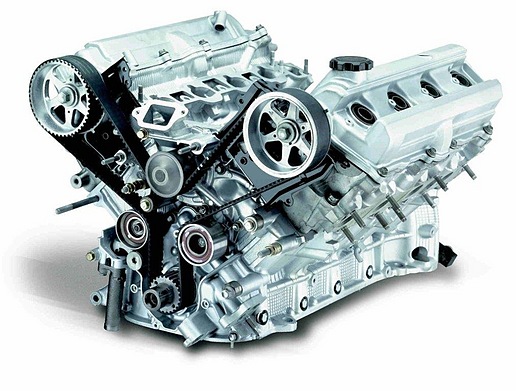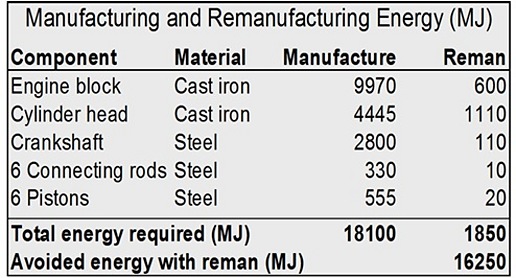Despite their greater complexity, automotive engines are lasting much longer—250,000 mi (402,000 km) is not an outlier. Which raises the question about the future of engine remanufacturing.
A forum sponsored by the Motor and Equipment Remanufacturers Association and the Auto Care Association during Automotive Aftermarket Industry Week addressed the issue, and the consensus was the "reman" engine is not going away. Although it may not be a fast-growing area, it should represent a significant market for more than the next decade, and probably beyond.
Engine long-life factors
Precision castings and machining of parts obviously are major factors in the longevity of engines, but four specific engineering developments were cited by Bill McKnight, Engine Training Leader for Mahle Aftermarket, a major engine parts supplier. They are: (1) electronic ignition, which maintains a reliable spark to high mileage; (2) roller lifters, which mitigate valve train problems from wear of flat tappets; (3) electronic fuel injection, which reduces raw fuel washing of lubricant off rings and crankshaft; and (4) multi-layer steel head gaskets, which maintain the combustion chamber seal.
The industry at one time consisted of numerous small to large remanufacturers, and many small shop rebuilders all over the country. Today there are just 14 large remanufacturers left, and it's "survival of the fittest," said McKnight.
Eric Cook, shop owner and Internet site auto advisor, added that the "complexity of rebuilding in-house today requires procedures we don't have time for." So he sticks to installing "reman" or used engines.
Despite increased engine longevity, rising vehicle prices have pushed the average vehicles-on-road age to 11.3 years, and there's the tendency of truck owners to keep their vehicles for even longer periods, which has helped maintain "reman" sales. An investment in perhaps $4,000-$5,000 for a passenger car gasoline engine—even well over $10,000 for a luxury-car remanufactured powerplant that carries the OE label (plus installation)—is hardly unusual.
A "reman" heavy-duty truck diesel engine varies widely in price, depending on the engine, but it can be up to $12,000 and more, plus installation.The prices are still far lower than installing a new engine. Luxury cars and diesel-powered trucks are not taken out of service so readily (a new over-the-road diesel may last over a million miles, and second or third owners of a luxury car often decide to make the investment in a "reman"). As a percentage of the price for a new vehicle, the "reman" engine investment is often a cost-effective choice, so "repowering" a car or truck that is otherwise in good condition continues to find a market in excess of 200,000 per year, McKnight said.
 Fuel injector test fixture from GB Remanufacturing has a viewing chamber for a technician to see the spray pattern. In addition to digital data on spray volume, there's a quick-check analog chart display to identify injectors below specifications (the two in the center, with yellow bars).
High-tech parts
Fuel injector test fixture from GB Remanufacturing has a viewing chamber for a technician to see the spray pattern. In addition to digital data on spray volume, there's a quick-check analog chart display to identify injectors below specifications (the two in the center, with yellow bars).
High-tech parts
The remanufacturers, however, face new difficulties. Although the engines are more durable, when they are remanufactured, there are high-tech parts that may need replacement, such as cam phasers, valve lift control systems, and cylinder deactivation modules. Although remanufacturers are primarily dealing with engines 7 to 15 years old, some engines from high-end cars still pose remanufacturing issues from comparatively early use of high-technology, and their precision manufacturing for lightweight and size optimization.
 This Mercedes-supplied remanufactured engine also is a long block, and with the OE imprimatur, it carries a premium price.
This Mercedes-supplied remanufactured engine also is a long block, and with the OE imprimatur, it carries a premium price.
Forum panelist Scott Miller of LKQ Corp., one of the country's major remanufacturers, cited the Lexus 4.3-L V8, which has such tight bore spacing that it cannot be rebored. "We send it out to Sulzer for SUMEBore, a thermal arc spraying of the bores" to provide a new coating that LKQ can service on its assembly lines. Adding that capability to just one of its own plants, Miller said, would represent a seven-figure investment in equipment. "Maybe in the future, if there's enough of an increase in volume to justify the cost," he added.
LKQ, he said, produces some 80,000 "long blocks," 50,000 cylinder heads, and 5,000 differentials per year, with a total of 2,000 engine and 1,600 cylinder head SKUs. A long block is an engine complete with heads and usually an oil pan, but typically requires transfer of manifolds, flywheel, timing cover, fuel system, and all accessory belt-driven accessories, external emission controls, and perhaps a harmonic damper.
 This LKQ remanufactured Lexus long block V8 comes with a new belt, but the installing shop must transfer valve covers, timing belt cover, oil pan, manifolds, and fuel and ignition systems from the replaced engine. Some "remans" include the oil pan.
This LKQ remanufactured Lexus long block V8 comes with a new belt, but the installing shop must transfer valve covers, timing belt cover, oil pan, manifolds, and fuel and ignition systems from the replaced engine. Some "remans" include the oil pan.
The days when a remanufacturer could run a line just for 350-in3 General Motors V8s is long gone. Now a company may have as few as three to five of the same engine, which not only requires a more flexible line, but adds to the time required. Along with the higher technology issues, an engine may take 22 h to remanufacture vs. as little as 8 h for the high-volume V8s of yesterday, McKnight said.
If a customer submits a "one-off" that is not in the LKQ catalog, Miller said, the general remanufacturing facilities cannot take it. But there is a high-performance division that will—at a higher price, of course.
The need for line flexibility is a factor that challenges the companies as they try to increase efficiency by reducing hours to remanufacture. One approach has been to assemble a "kit" of parts needed for each engine before it even enters a remanufacturing line, to assure the job can be completed expeditiously.
Remanufactured engines typically come with a warranty of up to three years and 100,000 mi (160,000 km) or unlimited mileage (depending on company). But they still must compete against the used engine from a salvage yard, which may be just 20-25% of the price, even if it's a low-mileage extraction from a wreck in which the engine avoided damage.
The "reman" engines with good warranties have had all moving parts inspected, including Magnaflux (magnetic dye) testing of ferrous metal components. If minor, cracks may be welded. Valve train parts, pistons and rings, bearings, oil pump, gaskets, seals, bearings, timing chain, or belt are invariably replaced. Crankshafts are resurfaced as necessary and micro-polished, and the main bearing saddles are line honed. The engines also are, to a degree, "reverse-engineered" to correct any identified OE defects.
Replacement cam phasers and some related high-tech parts are becoming available from aftermarket suppliers, LKQ's Miller said.
Virtually all engines off a remanufacturing line are tested. Miller said when an LKQ engine is tested, it comes with a "birth certificate" that lists oil pressure, coolant temperature, compression readings, and time of test.
‘Remans’ energy efficient
 Purdue University chart shows energy comparison between a new heavy-duty diesel and a remanufactured one. The savings is almost 90%.
Purdue University chart shows energy comparison between a new heavy-duty diesel and a remanufactured one. The savings is almost 90%.
There is no question that remanufacturing engines is still very energy efficient. Prof. John Sutherland of Purdue University, another panelist, explained. He compared the embodied energy for aluminum, cast iron, and steel—taking extraction, refining and casting vs. remanufacturing. In each case the savings are enormous. The total energy for manufacturing a typical truck diesel is 18,100 MJ, vs. 1,850 MJ for remanufacture, he said, almost a 90% saving.
Sutherland also noted that industrial water consumption is the third greatest use, after power generation and irrigation, so the savings in this resource also should be considered.
Also part of today's powertrain "reman" picture are such subassemblies as turbochargers and superchargers, fuel injection components (particularly diesel injectors), and electronic components. Fuel injection parts, including injectors, are becoming higher tech and the tolerances for spray pattern and volume are tight. New test equipment is being installed at remanufacturers to compare both and provide digital analysis for each injector in a set.
Source: sae.org